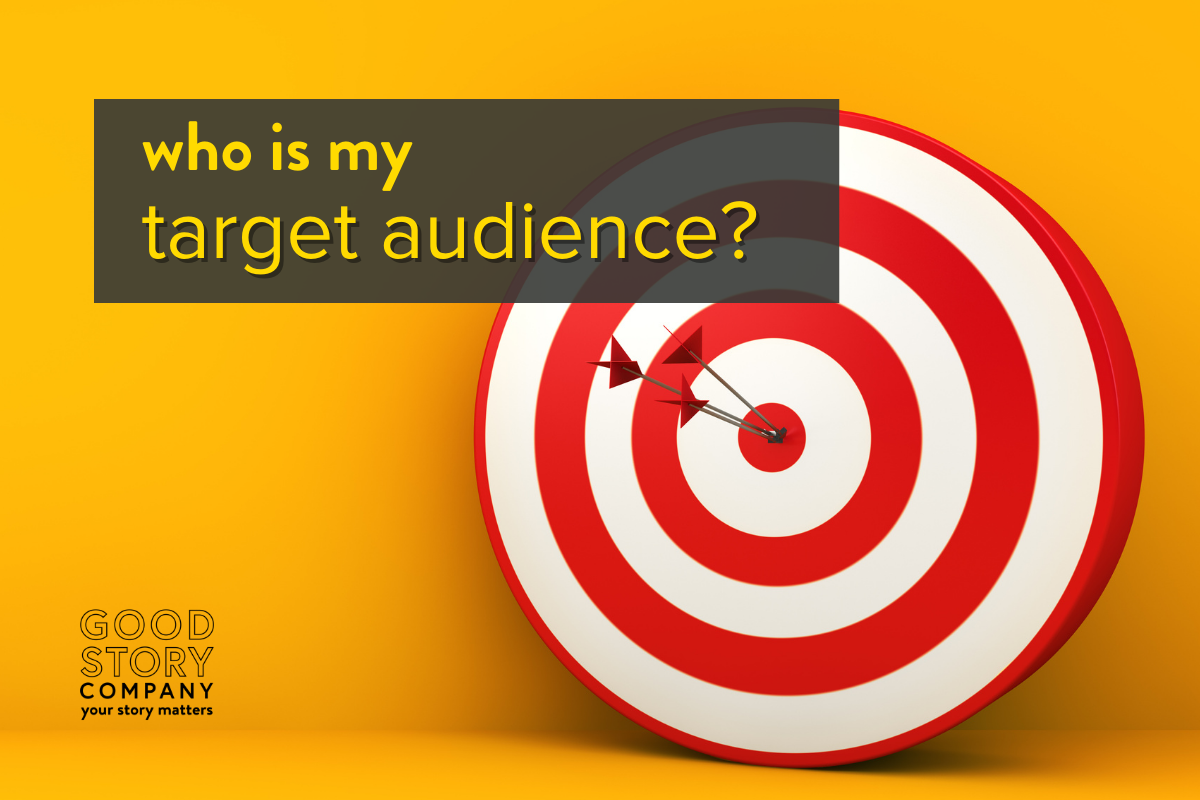Who Is My Target Audience?
Thinking about a “target audience” can sound cold and impersonal, especially for writers who are pouring their hearts into a manuscript. After all, it’s not like we’re lining readers up, eyeing the red circles painted on their torsos, and lobbing our books at them.
Or are we? Writers can get carried away with statements like, “My book will appeal to everyone!” and “Readers of fiction will love this book” and “Fans of Rick Riordan and Shakespeare will flock to read this!” Every reader will not like every book, and yours is no exception. That doesn’t mean your mom will be your only reader, but it does mean that you have to figure out who else—besides your mom—is in your target audience.
The arrow hits YOUR target audience—not Shakespeare’s or Rick Riordan’s.
Good Story Learning is a whole library of tips, workshops, handouts, resources and videos, created just for writers like you. All you need to do is unlock it.
Find YOUR Target Audience
Category and genre play a huge role in identifying a writer’s target audience. The picture book audience is far different from the literary fiction audience. This sounds obvious, but many writers struggle to identify their proper audience. This is a basic writing concept we teach our elementary students, but it eludes some of us adult writers when we get excited about a manuscript that we love so much, we think everyone else will, too. Identifying the target audience is crucial to writing a compelling story that meets reader expectations.
Without knowing the target audience, a writer can end up with a middle grade manuscript featuring adult protagonists worried about parenting and work, a YA contemporary that’s 200,000 words, a historical novel full of modern slang, or a mystery without a dead body. Knowing your genre—and therefore your audience—should affect all the choices you make in outlining, drafting, and polishing a manuscript, including plot expectations, word count, tone, vocabulary, style, character development, and content.
So what goes into determining your target audience? Think about an imaginary reader for your manuscript. There’s an age there—picture books, chapter books, middle grade, and young adult all have a pretty narrow window, while adult genres have a broader range. But adults read picture books out loud to their preschoolers, teenagers like horror and thrillers, and some estimate that as many as forty percent of YA readers are adults. True! There will be lots of readers outside your target audience, but your primary audience will be in a certain range. You are writing your YA novel for teens, not for their parents.
Age matters most in writing for children. Young adults are grappling with coming of age, figuring out who they are, embarking on their first romantic relationships, and sometimes dealing with heavy issues—and that’s reflected in the books they want to read. Middle schoolers are also figuring out who they are, but their worlds are usually still centered on friends and family, without a lot of heavy romance. School settings are common in MG. They can be in YA as well, but high schoolers have learned to drive and have larger worlds and more independence than middle schoolers, and their books reflect that. The line between YA and MG is distinct, but many writers struggle with it. Go here for a more in-depth analysis of these two age groups.
Target Audience Expectations
Readers come to certain types of stories with expectations, and a savvy writer will learn how to meet them. What word count does your audience expect? Picture books that are one hundred pages long won’t fly, and neither will an epic fantasy that clocks in at 40,000 words. Can you swear or describe explicit scenes of violence? How much time can you spend describing the technical function of a space craft you’ve invented or fascinating historical details you’ve researched about Victorian wedding ceremonies? It depends on—you guessed it—your target audience. Readers of sweet romance will leave scathing reviews over one use of mild profanity in writing, and readers of hard science fiction will be disappointed if all technical and scientific details are skimmed over. In general, an adult audience has a higher tolerance for lengthier descriptions and a slower pace than younger readers.
When you know your target audience, you can meet their expectations. Knowing who your readers are is a much more powerful tool than trying to appeal to all lovers of Percy Jackson and/or the plays of Shakespeare.
Caution!
Now, one word of caution! There is a danger in making a target audience too narrow. Perhaps I have written a thriller about a newlywed who suspects her new husband of using drugs, only to find that his day job as a luthier and importer of fine stringed instruments is a cover for smuggling drugs into the highest of circles. Who is the audience for my book? Classical musicians? Luthiers? Newlyweds? Drug users? Brides in their late twenties? Drug runners? Absolutely not. Those categories are way, way too narrow—especially when you consider the subset of those groups who are readers. That’s why focusing on genre and category, rather than tiny, specific details, is most useful in determining a target audience.
That’s how you find readers beyond your mom. She was going to like your book, anyway.
Want even more Good Story Company content? Become a member! Get access to tips, workshops, handouts, resources and videos for writers of all levels—all for less than your Netflix subscription. This post contains affiliate links.

